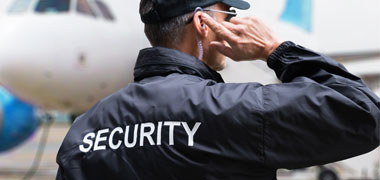
How do I become a aviation medic?
Certificate IV in Health Care
- There are no mandated entry requirements.
 Australian Paramedical College
Australian Paramedical College
Related occupations
Emergency Medical Technician
An Emergency Medical Technician (EMT) provides urgent care, assesses patients, and stabilises them before transport to medical facilities.
Patient Transport Officer
A Patient Transport Officer safely transfers non-emergency patients between locations, requiring communication skills, physical fitness, and procedural accuracy.
Industrial Medic
An Industrial Medic delivers emergency healthcare at remote work sites, responding to accidents, managing injuries, and coordinating patient transport.
Australian Defence Force Medic
An Australian Defence Force Medic provides medical care in emergencies, managing multiple casualties while staying calm under pressure.
Emergency Medical Dispatcher
An Emergency Medical Dispatcher answers emergency calls, prioritises responses, and provides advice while paramedics are en route.
Emergency Services Officer (ESO)
An Emergency Services Officer (ESO) ensures site safety during emergencies, assesses situations, and arranges medical treatment for casualties.
Volunteer Ambulance Driver
A Volunteer Ambulance Driver transports patients in non-emergencies, requiring flexibility, strong communication skills, and adherence to procedures.
Ambulance Service Paramedic
An Ambulance Service Paramedic provides emergency care, responds to 000 calls, treats patients on-site, and must stay calm under pressure with strong decision-making skills.
Paramedic
Paramedics respond to emergencies, providing on-site treatment and transport, requiring quick thinking, fitness, and resilience to trauma.
Critical Care Paramedic
Critical Care Paramedics are highly trained responders who manage severe medical emergencies, requiring quick thinking and advanced skills.
Intensive Care Paramedic
Intensive Care Paramedics are expert responders who manage severe emergencies, performing advanced procedures and supervising junior staff.
Emergency Response Specialist
Emergency Response Specialists manage critical incidents, ensuring community safety through emergency plans, risk assessments, and training.
Flight Paramedic
A Flight Paramedic provides advanced medical care during air transport, administering treatments and coordinating with teams to ensure patient safety.
Ambulance Transport Attendant
An Ambulance Transport Attendant transports patients safely, ensuring comfort, monitoring their condition, and communicating effectively with healthcare teams.4o mini
Common questions
How much does an Aviation Medic earn?
In Australia, a full time Aviation Medic generally earns $2,000 per week ($104,000 annual salary) before tax. This is a median figure for full-time employees and should be considered a guide only. As you gain more experience you can expect a potentially higher salary than people who are new to the industry.
What are the job opportunities for an Aviation Medic?
The number of people working in this industry has increased over the last five years. There are currently 19,700 people employed in this field in Australia and some of them specialise as an Aviation Medic. Aviation Medics may find work across all regions of Australia.
Source: Australian Government Labour Market Insights
How do I become an Aviation Medic?
If you’re interested in a career as an Aviation Medic, consider enrolling in a Diploma of Paramedical Science. This course will prepare you for various types of emergency response work and develop your skills in basic life support. You could also consider a Certificate IV in Health Care.
Further reading


Careers for people who love the outdoors
14th September 2021)

